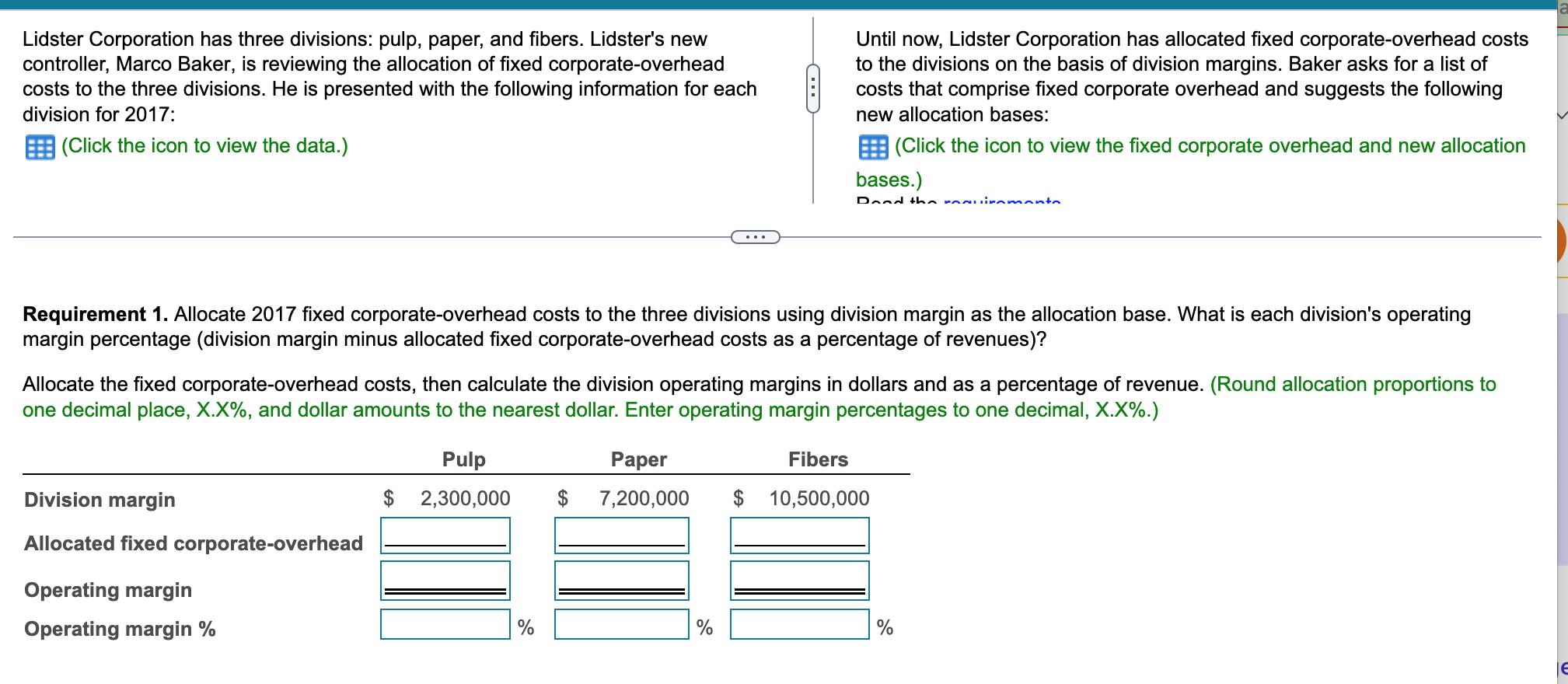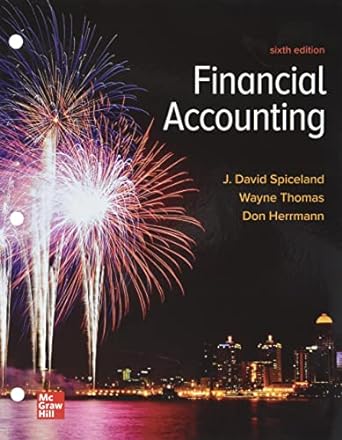Answered step by step
Verified Expert Solution
Question
1 Approved Answer
Fixed Corporate-Overhead Costs Suggested Allocation Bases Human resource management$1,400,000Number of employeesFacility3,500,000Floor space (square feet)Corporate administration4,900,000Division administrative costsTotal$9,800,000 Pulp Paper Fibers Revenues$7,700,000$17,200,000$27,100,000Direct manufacturing costs3,400,0008,200,00010,400,000Division administrative costs2,000,0001,800,0006,200,000Division
 Fixed Corporate-Overhead CostsSuggested Allocation BasesHuman resource management$1,400,000Number of employeesFacility3,500,000Floor space (square feet)Corporate administration4,900,000Division administrative costsTotal$9,800,000 PulpPaperFibersRevenues$7,700,000$17,200,000$27,100,000Direct manufacturing costs3,400,0008,200,00010,400,000Division administrative costs2,000,0001,800,0006,200,000Division margin$2,300,000$7,200,000$10,500,000Number of employees$450$225$825Floor space (square feet)$62,700$34,770$92,530
Fixed Corporate-Overhead CostsSuggested Allocation BasesHuman resource management$1,400,000Number of employeesFacility3,500,000Floor space (square feet)Corporate administration4,900,000Division administrative costsTotal$9,800,000 PulpPaperFibersRevenues$7,700,000$17,200,000$27,100,000Direct manufacturing costs3,400,0008,200,00010,400,000Division administrative costs2,000,0001,800,0006,200,000Division margin$2,300,000$7,200,000$10,500,000Number of employees$450$225$825Floor space (square feet)$62,700$34,770$92,5301.
Allocate
2017
fixed corporate-overhead costs to the three divisions using division margin as the allocation base. What is each division's operating margin percentage (division margin minus allocated fixed corporate-overhead costs as a percentage of revenues)?
2.Allocate
2017
fixed costs using the allocation bases suggested by
Baker.
What is each division's operating margin percentage under the new allocation scheme?
3.Compare and discuss the results of requirements 1 and 2. If division performance incentives are based on operating margin percentage, which division would be most receptive to the new allocation scheme? Which division would be the least receptive? Why?4.Which allocation scheme should
Lidster
Corporation use? Why? How might
Baker
overcome any objections that may arise from the divisions?
Lidster Corporation has three divisions: pulp, paper, and fibers. Lidster's new controller, Marco Baker, is reviewing the allocation of fixed corporate-overhead costs to the three divisions. He is presented with the following information for each division for 2017: (Click the icon to view the data.) Until now, Lidster Corporation has allocated fixed corporate-overhead costs to the divisions on the basis of division margins. Baker asks for a list of costs that comprise fixed corporate overhead and suggests the following new allocation bases: (Click the icon to view the fixed corporate overhead and new allocation bases.) Requirement 1. Allocate 2017 fixed corporate-overhead costs to the three divisions using division margin as the allocation base. What is each division's operating margin percentage (division margin minus allocated fixed corporate-overhead costs as a percentage of revenues)? Allocate the fixed corporate-overhead costs, then calculate the division operating margins in dollars and as a percentage of revenue. (Round allocation proportions to one decimal place, X.X%, and dollar amounts to the nearest dollar. Enter operating margin percentages to one decimal, X.X%.)Step by Step Solution
There are 3 Steps involved in it
Step: 1

Get Instant Access to Expert-Tailored Solutions
See step-by-step solutions with expert insights and AI powered tools for academic success
Step: 2

Step: 3

Ace Your Homework with AI
Get the answers you need in no time with our AI-driven, step-by-step assistance
Get Started


